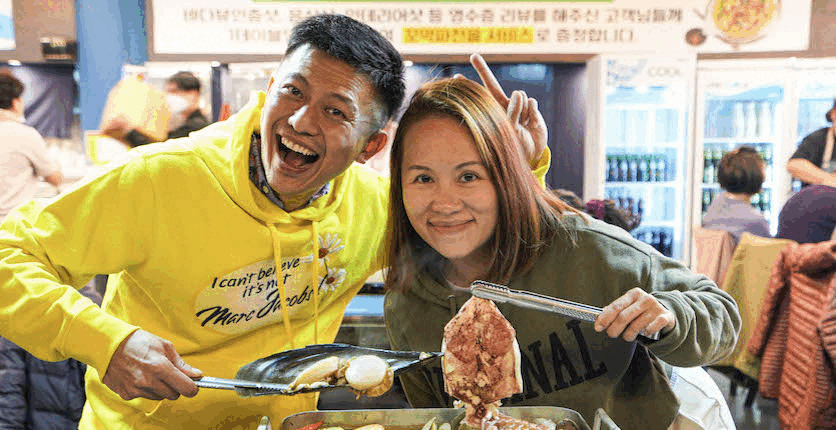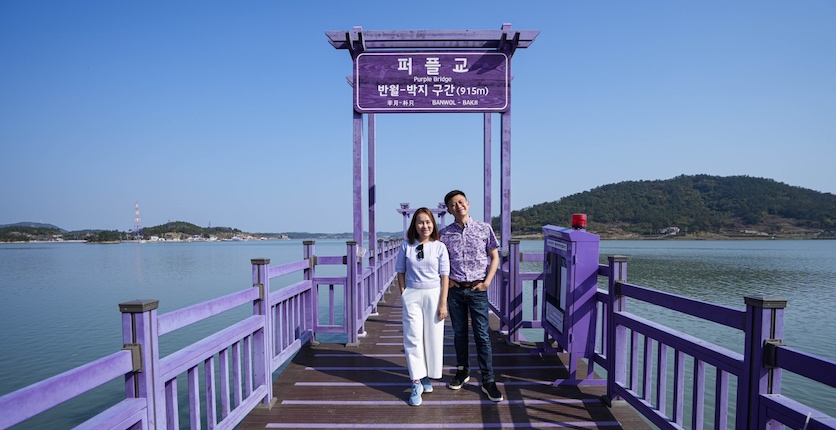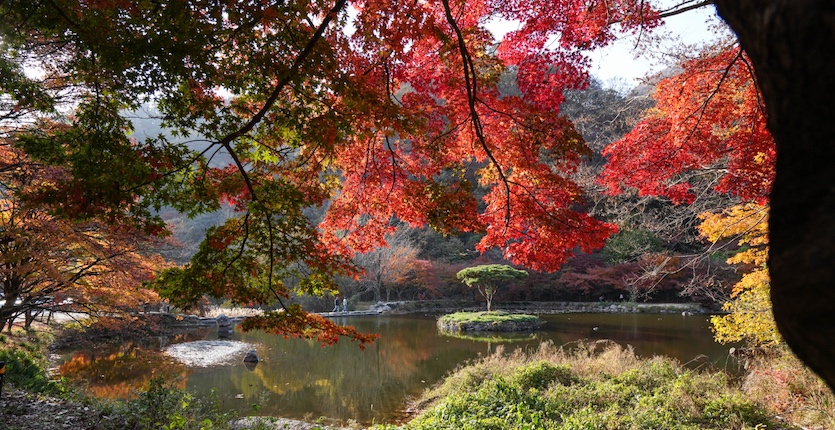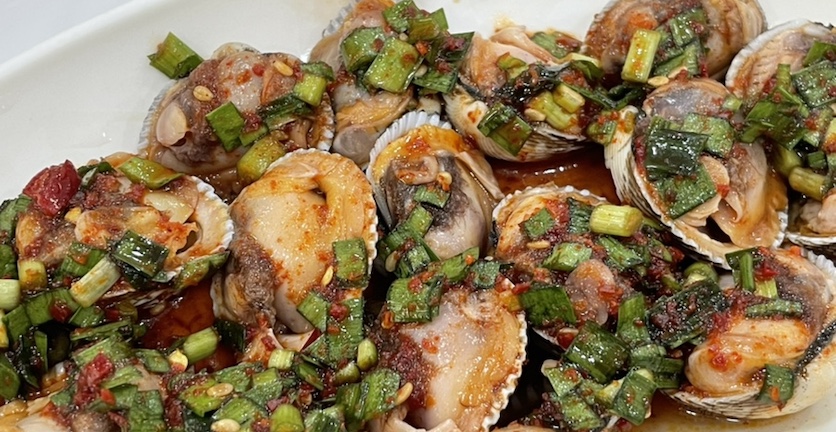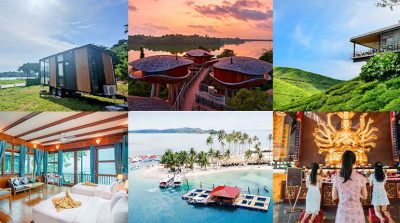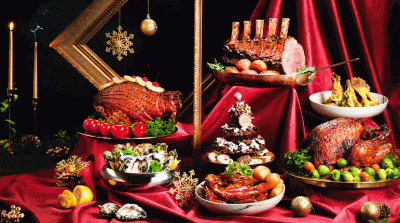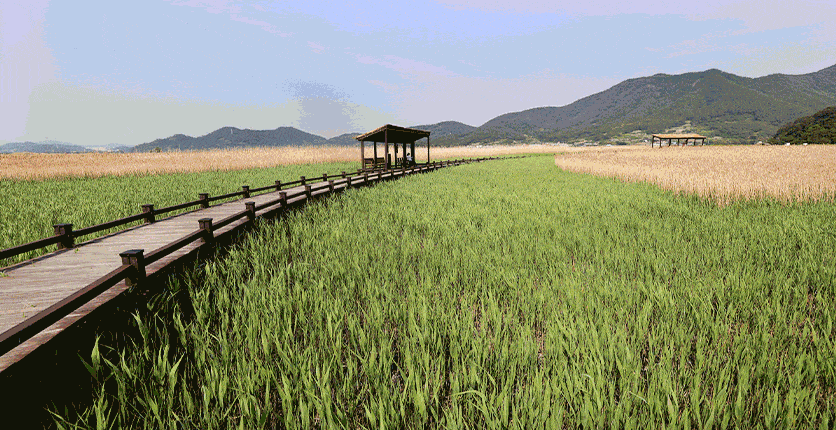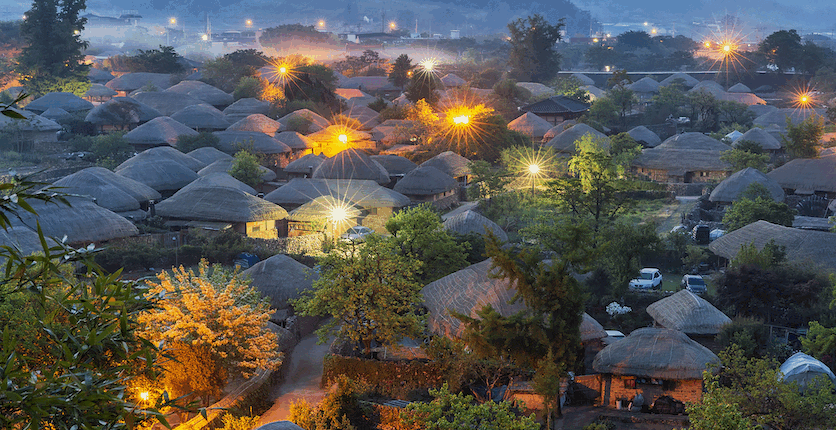Just as the Italians say that you haven’t eaten real Italian food until you’ve gone to Sicily, Koreans will tell you to venture far south for the best Korean food. Jeollanam-do is the country’s greenest province, filled with thousands of islands, green tea fields, and seafood.
Thanks to U-weekly and the Korea Tourism Organization, I got to experience the beauty of Jeollanam-do with celebrity TV host Pornsak. We savoured the region’s fresh seafood, sampled natural produce and explored the cities of Boseong, Suncheon, Mokpo and Yeosu.
Here are some highlights of our trip!
What to see?
Purple Island
This is the perfect Instagram-worthy spot in Jeollanam-do. Over 400 houses are painted purple. Other than constructing purple telephone booths and a big purple bridge, lavender was also planted to complete the dazzling purple landscape.
Owing to its purple scenery, this unique remote destination is called Purple Island. United Nations World Tourism Organization designated Purple Island as the World’s Best Tourist Village in 2021.
It costs 3,000 KRW (S$3.12) to enter Purple Island. However, if you wear something purple (hat, scarf, shoes, etc.), you can get in for free.
Naganeupseong Folk Village
Travel back in time in Naganeupseong Folk Village in Suncheon. This charming folk village became an UNESCO World Heritage site in 2011. It is considered the best preserved Korean fortress town in the country, therefore it is a destination you absolutely need to see in Jeollanam-do.
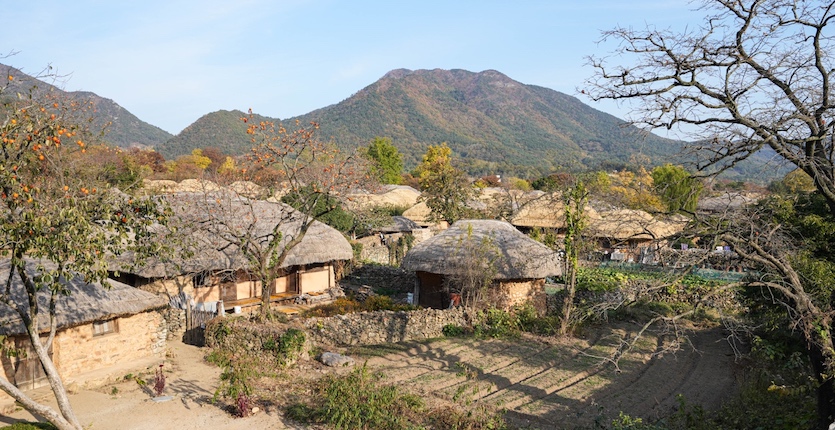
The hanok (traditional Korean houses) in this village are called chogajib. At present, the village still houses close to 100 families and their chogajib are still in their original condition with thatched roofs. Not only are the homes in their original state, there are also actual residents that occupy the homes and still live a very traditional lifestyle.
Walk along the top of the fortress wall and get a beautiful view of the village over the rooftops covered in straw. There are also various houses that host workshops from the blacksmith, to those teaching straw crafts, paper art, fabric dyeing, and so on.
View this post on Instagram
Boseong Green Tea Field
Boseong is the largest producer of tea in the country and it is famous for its beautiful rolling tea fields perched atop the mountains that overlook the sea. These tea plantations have been around since the days of the Japanese Occupation and the fields are incredibly picturesque. No matter which way you look, there is beauty all around. You can do a mini-hike up to the top of the mountain and treat yourself to some green tea ice cream once you’ve made it back down.
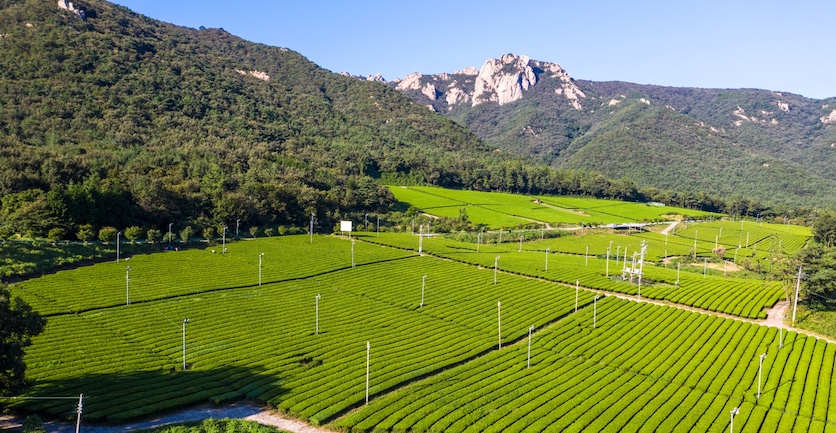
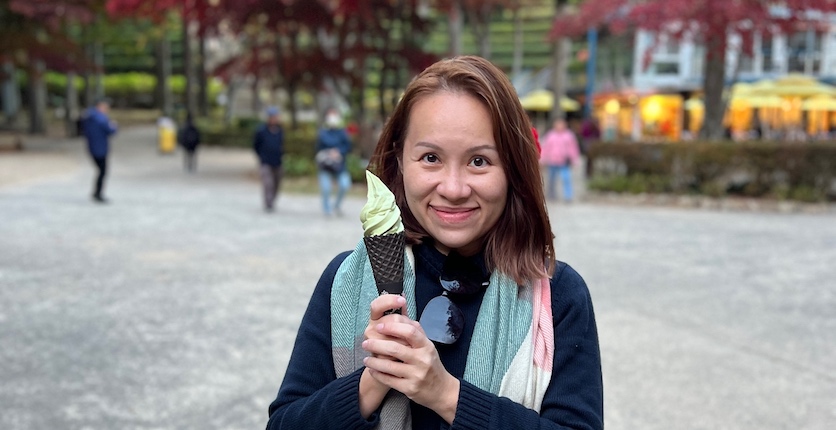
Wando Abalone catching
Wando is an island in the southern part of South Korea known for its production of seaweed products and its high-quality abalone. Here, follow the experts out to the sea and watch them pick the abalones. Thereafter, you can have abalone sashimi!
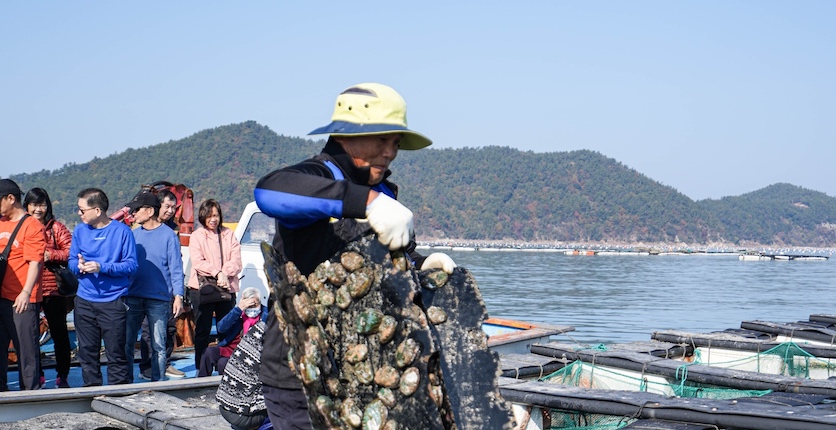
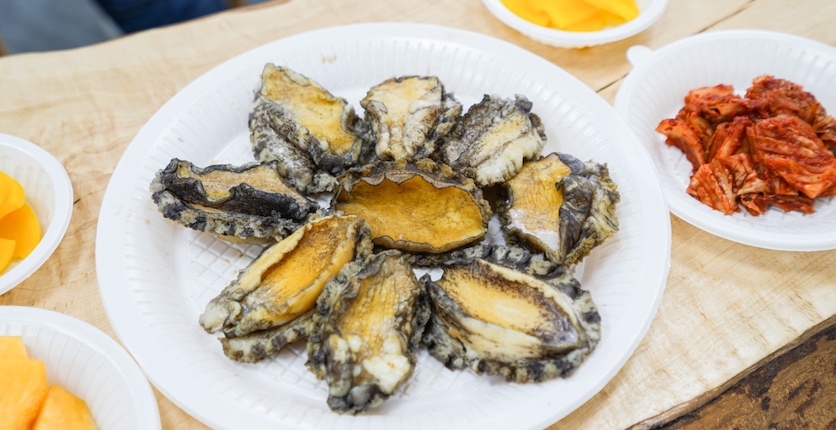
View this post on Instagram
Naejangsan National Park
Autumn in Korea is the most magnificent. This is the time of year when you can count on brilliant blue skies, incredibly comfortable weather, and a country bursting with every spectacular shade of orange, yellow and red!
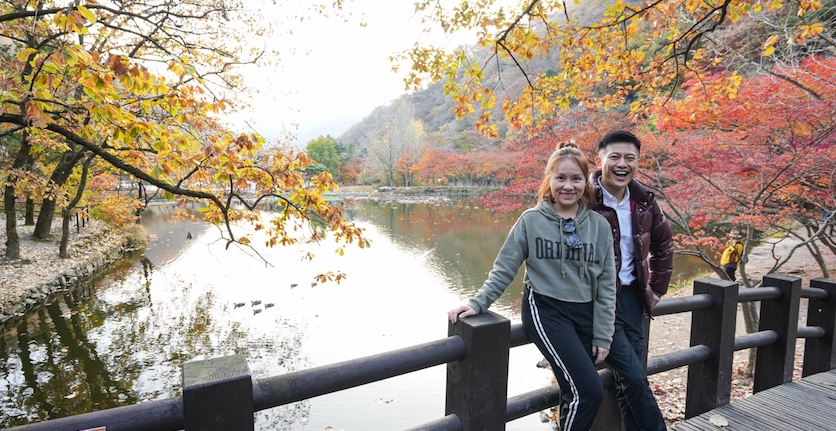
Naejangsan National Park is hands down one of the most beautiful places in Korea for autumn foliage. Take a stroll along the maple-tree lined roads and enjoy the beautiful lush forests and mountains.
Mokpo Marine Cable Car
Mokpo is surrounded by mountains and sea, so taking the marine cable car is the most dramatic way to view the city. This is the longest cable car ride in Korea, spanning 3.2km long over the sea. We suggest riding the cable car during sunset and enjoying a bird’s eye view of the port and surrounding islands.
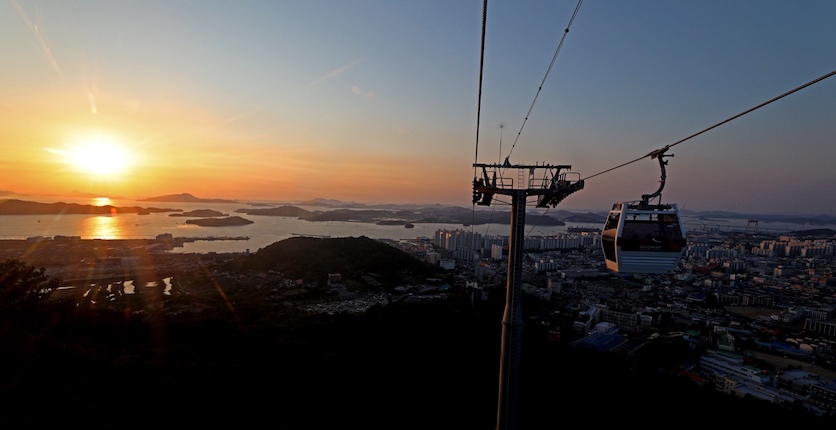
Arte Museum Ocean
You might have heard of the Arte Museum in Jeju before, and yes, there’s one in Yeosu! This is Korea’s largest immersive media art exhibition. Themed “The Ocean”, it allows visitors to experience varying visual intensities and sensuous sounds, such as blooming flowers, crashing waves and shiny stars.
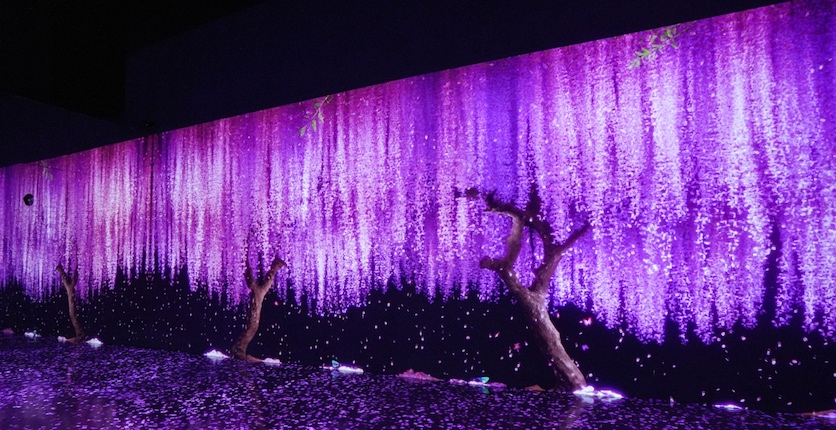
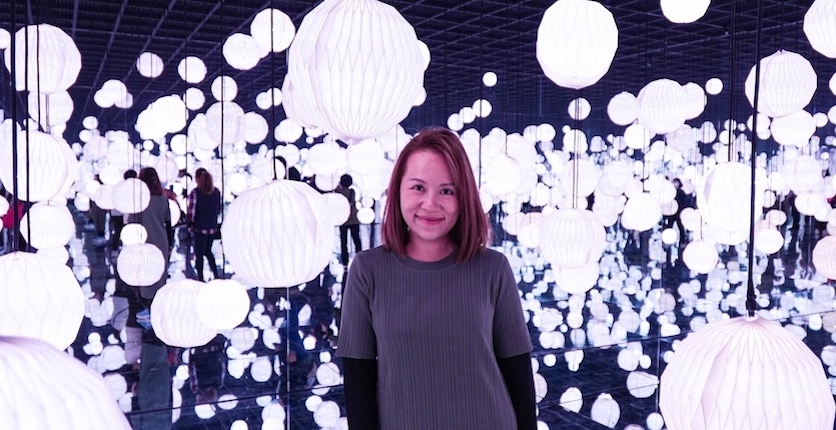
Suitable for all ages, everyone can move freely in each area to experience a different time and space. After a visit to the museum, don’t forget to grab a cup of coffee at Café A.
Gamcheon Culture Village
Once a dilapidated neighbourhood which housed refugees following the Korean War, Gamcheon Village was transformed in 2009, when the government turned the area into a creative community. Under the theme, “Dreaming of Busan Machu Picchu,” painters and sculptors added their artistic touch to the streets and homes of Gamcheon.
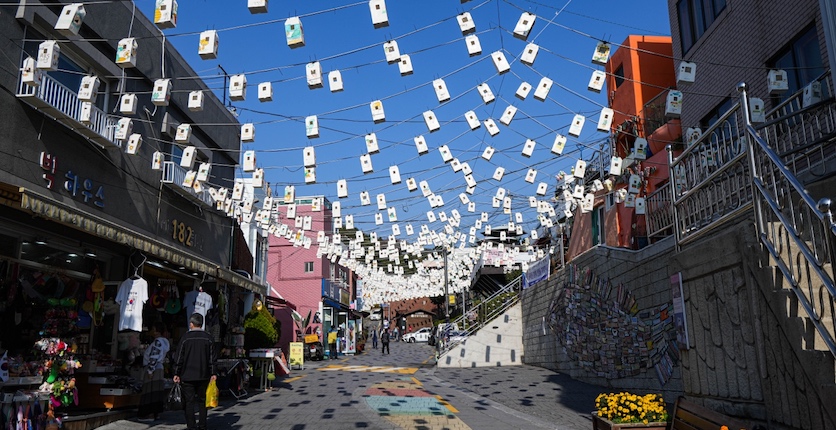
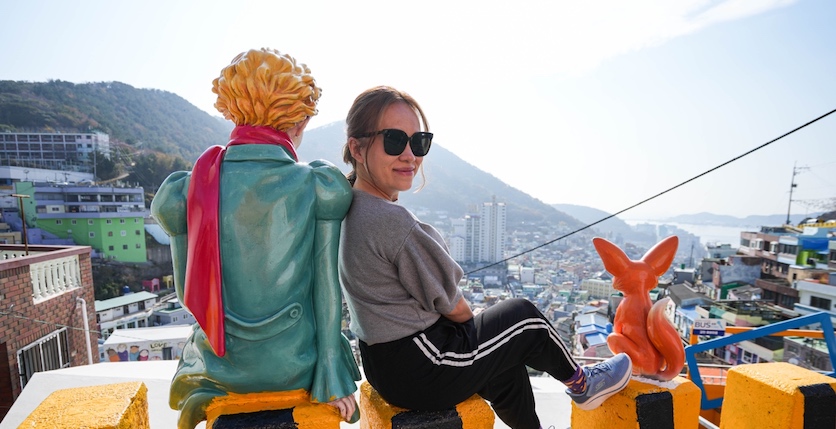
These days, tourists flock here to marvel at some of the most beautiful street art in Korea. The alleyways, staircases and winding streets add an exotic charm for visitors exploring the picturesque village. That is why it is also known as ‘The Santorini of South Korea’. One of the best things to do here is to simply get lost in its labyrinth of alleys or drop by one of their cafes to enjoy the lovely scenery over your favourite drinks.
What to eat?
Cockle Bibimbap
The first meal we had during this trip was Kkomak Bibimbap. I mean, I usually eat cockles with my Char Kway Teow, so I couldn’t imagine the taste when you toss these saltwater clams with gojuchang (chilli bean paste) and serve them with flavoured rice.
This is a popular dish during winter because the cockles grow plump and sweet during this season. When mixed thoroughly, they contrast beautifully with the crunch from the vegetables. Every bite is a party in the mouth.
Bamboo Set Menu + Grilled Short Rib Patties
Damyang in Jeollanam-do is home to the most number of bamboos in Korea. It has a Bamboo Theme Park, Bamboo Festival, a large bamboo garden and bamboo museum. But for the wandering gourmand, Damyang’s best bamboo creation is Daetong-bap, steamed rice in bamboo stalk.
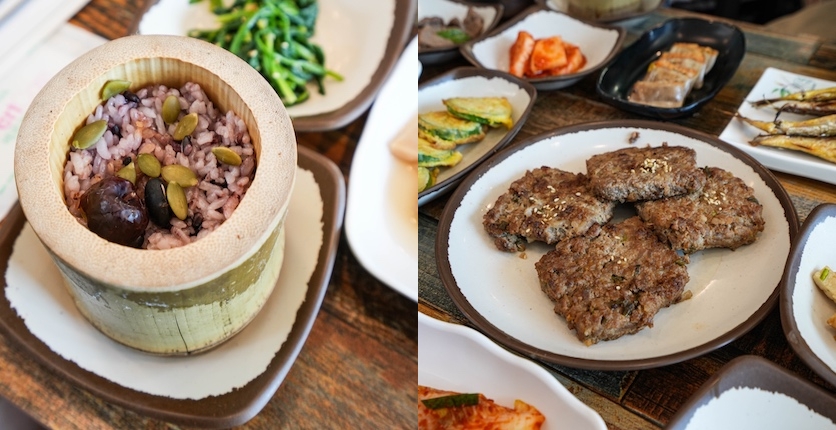
The fluffy rice is steamed with chestnuts, jujubes, pine nuts and grains in a thick and fully formed bamboo. The fragrance of the rice comes from the natural bamboo oils and the bamboo is only used once. The rice is served with tteokgalbi (grilled short rib patty), so delicious!
Famous Mokpo Octopus Assorted Seafood Stew
Mokpo is known for its location by the sea, a place abundant with various seafood such as octopus and crabs. When you are there, you have to try their spicy seafood stew which includes the most famous ingredients from Mokpo such as trifold octopus, seasoned crabs and abalone. Just looking at the picture below makes my stomach growl! Both comforting and hearty, this is perfect to warm you right up in Korea’s cold weather.
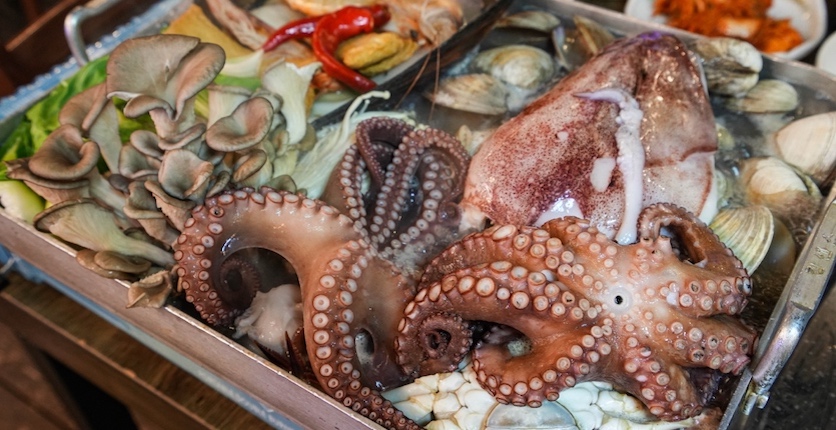
After you are done with the stew, add in some rice and gochujang to make your own seafood bibimbap! This is one of the locals’ favourite ways of cooking and enjoying fresh seafood.
View this post on Instagram
Ssiat Hotteok
No visit to Busan would be complete without sampling the city’s famous ssiat hotteok, a delectable fried pastry stuffed with sugar, honey, nuts and sunflower seeds. There are a number of stalls and cafes selling this sweet treat, so don’t miss your chance to try it! You most likely won’t be able to stop at one!
View this post on Instagram
If you love food, love island-hopping and historical sites, add Jeollanam-do to your vacation bucket list now! It is great all year round, and you can even find green scenery during winter. I can’t wait to be back!
Photos: Miss Tam Chiak
This post was brought to you by the Korea Tourism Organization.

